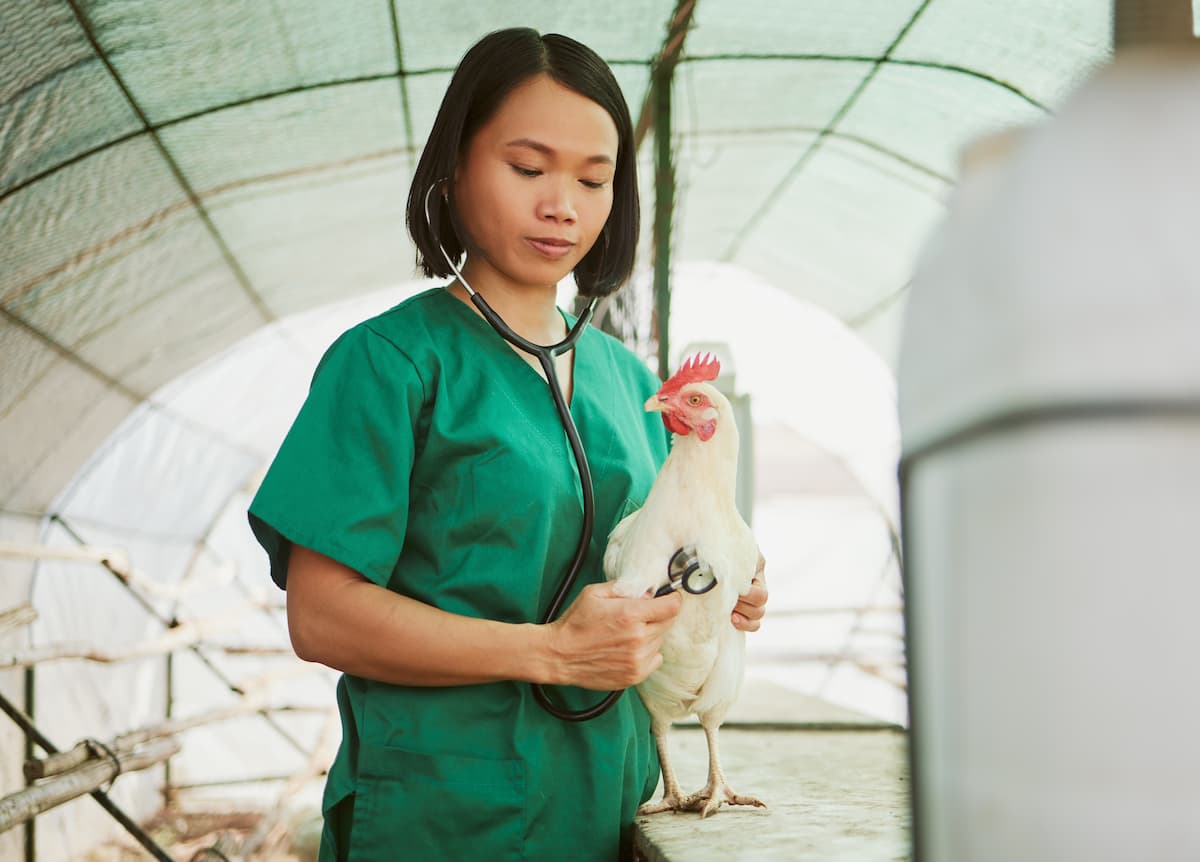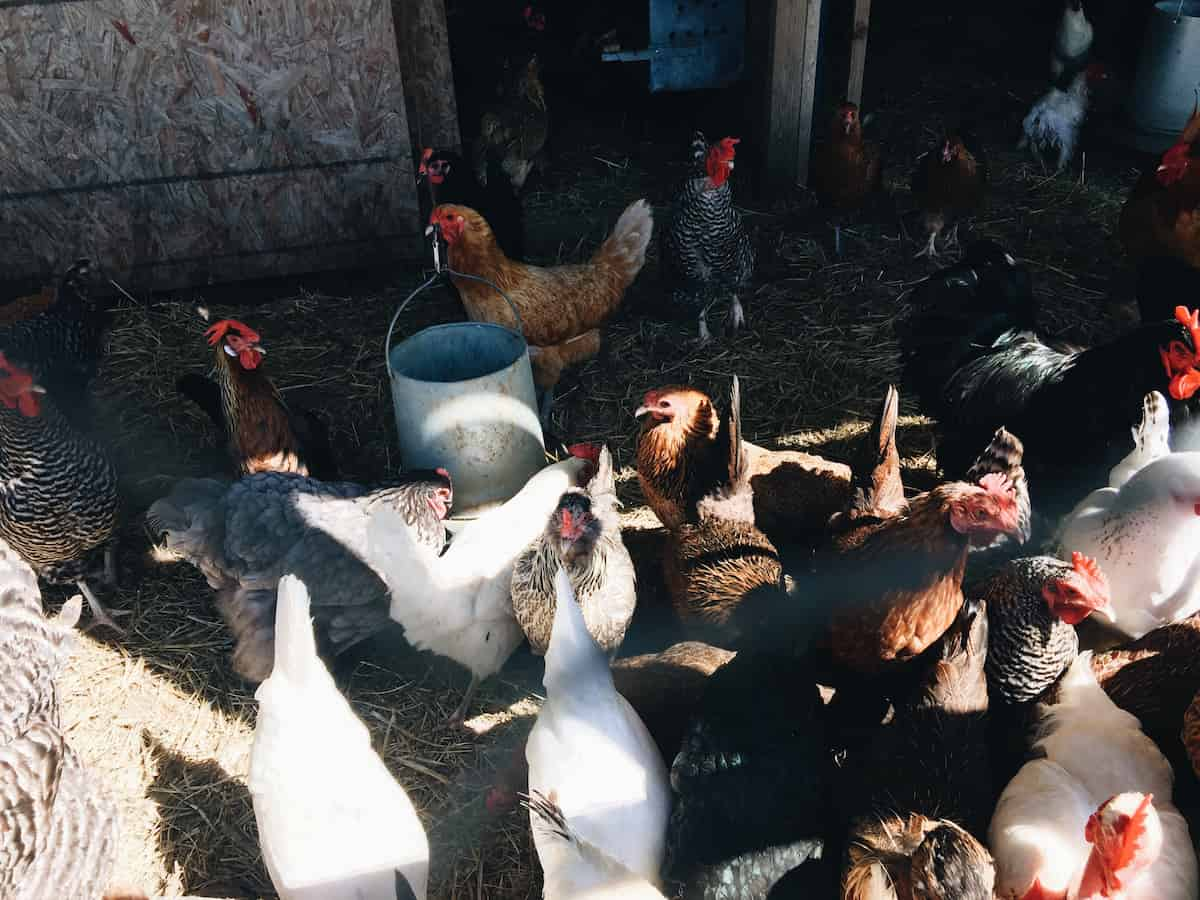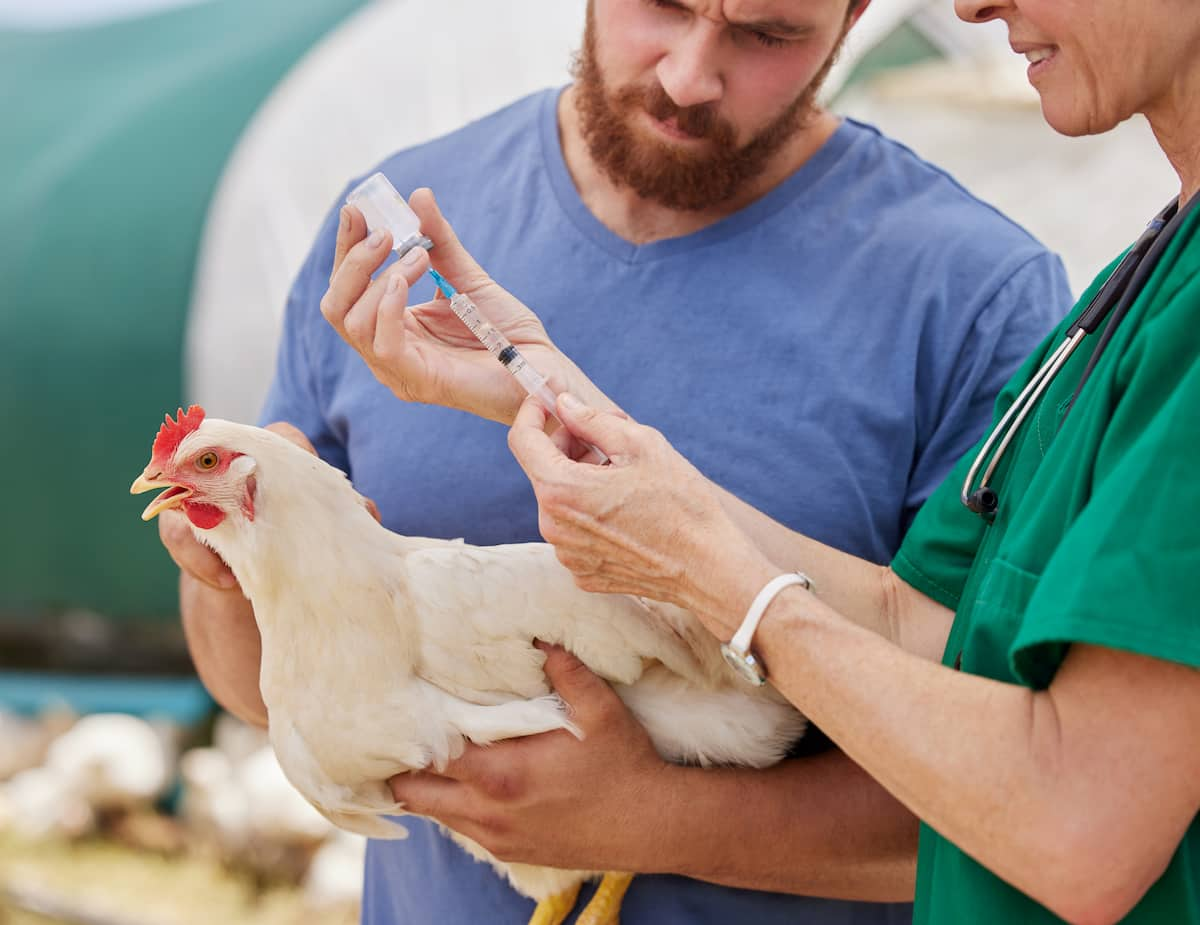Fowlpox is a viral disease that commonly affects backyard chickens that have not been vaccinated. The disease is characterized by whitish blisters on the skin of the bird’s comb, wattles, and other areas, which later develop into dark scabs that take approximately three weeks to heal and drop off.

Although most birds survive the infection, very young or weak birds may succumb to the disease, and lesions in the mouth and throat can cause difficulty breathing and death. To prevent the disease, exhibition poultry breeders prefer to vaccinate their birds. The disease can also contain an integrated sequence from the Reticuloendotheliosis virus (REV), which is linked to the development of lymphoma in infected birds. Management of mosquito populations can help reduce outbreaks of fowlpox.
Fowl Pox Management in Chicken
Causes of Fowl Pox Disease
- An avipoxvirus in the Poxviridae family causes fowl pox. The virus is highly resistant and can survive in the environment for extended periods in dried scabs.
- Transmission of the virus usually occurs through contact with skin abrasions and the shedding of skin lesions (scabs) from recovering birds.
- Mosquitoes and other biting insects may also serve as mechanical vectors for transmission. Fowl pox can persist in multiple-age poultry complexes due to the slow spread of the virus and the availability of susceptible birds.
Disease Cycle of Fowl Pox
- The fowl pox virus is primarily transmitted to flocks through biting mosquitoes that have fed on infected birds.
- The virus can be transmitted to every uninfected bird on which the mosquito feeds. Once one bird is infected, the virus can spread to other flock members through scratches, broken skin, and mucous membranes, typically associated with fighting or pecking.
- The virus is highly resistant to dry scabs and can easily be transmitted to non-infected birds. The virus can infect birds through cuts and skin abrasions and is found in dried scabs, feathers, and skin dander. Birds of any age can become infected, and the disease can strike at any time of year.
Symptoms of Fowl Pox Disease
- There are two types of fowlpox: Drypox and Wetpox. Many birds have wart-like lumps in both forms, which is a reliable guide to diagnosis.
- The most common type is a dry pox, which manifests as fleshy pale lumps that enlarge and run together to form yellow crusts. In about a week, these scabs darken and fall off. Dry pox lesions are most common on the comb, wattle, and face, but they can appear on other body parts.
- On the other hand, wet pox manifests as ulcerous cheesy masses in the mouth, nose, and sometimes throat areas, which can obstruct eating and breathing. Birds with wet pox may become ill and, in some cases, die.
In case you missed it: Fowl Cholera Disease Management in Chicken: Symptoms, Treatment, Diagnosis and Prevention of Disease

Diagnosis of Fowl Pox in Chicken
- Diagnosis of Fowl Pox in chickens can be made by observing characteristic gross and microscopic lesions in affected birds, such as fleshy pale lumps or ulcerous cheesy masses on the face, comb, and wattles, and the presence of eosinophilic cytoplasmic inclusion bodies visible with H&E staining, fluorescent antibody or immunohistochemical methods.
- The virus can also be isolated by inoculating the chorioallantoic membrane of developing chicken embryos or cell cultures of avian origin, and genomic profiles can be compared using restriction fragment length polymorphism or PCR amplification of virus-specific genomic fragments.
- The humoral immune response can be measured by ELISA, agar gel precipitation (AGP), or virus neutralization tests.
Treatment and Control of Fowl Pox Disease
- There is no treatment for fowl pox, so prevention through vaccination is key.
- Several vaccines are available for use in both backyard and commercial flocks. Vaccination can be done using the wing-stick or thigh-stick method, with the age and route of administration following the recommendations on the vaccine label.
- It’s important to check vaccinated birds for a “vaccination take” 7 to 10 days after administration. If lesions still occur in the flock, vaccinating when 20 percent or less of the birds show symptoms can help limit further damage.
- Additionally, controlling the spread of the disease can be done by isolating sick birds, practicing good biosecurity, and controlling mosquito populations.
Preventive Measures of Fowl Pox Disease in Chickens
- Vaccination: Vaccination is the most effective way to prevent Fowl Pox Disease in chickens. Healthy chicks should be vaccinated as early as day 1-4 of life using live virus vaccines or killed vaccines with oil adjuvant.
- Biosecurity: Implementing strict biosecurity measures can help prevent the spread of Fowl Pox Disease. This includes keeping the chicken coop clean and dry, preventing contact with wild birds, and controlling mosquito populations.
- Quarantine: Any new birds introduced to the flock should be quarantined for at least 30 days to ensure they are not carriers of Fowl Pox Disease.
- Proper management: Proper management practices, such as reducing overcrowding and minimizing stress, can help prevent the spread of Fowl Pox Disease.
- Mosquito control: Reducing mosquito populations around the chicken coop through mosquito nets, insecticides, or other means can help prevent the transmission of Fowl Pox Disease.
In case you missed it: Coccidiosis Disease Management in Chicken: Symptoms, Treatment, Prevention and Management of Disease

Conclusion
Fowlpox is a contagious viral disease that affects birds of all ages, especially chickens and turkeys. The disease is transmitted through mosquitoes, contaminated surfaces, water, feed, and wounds. The clinical signs of the disease vary from dry and wet forms to oculonasal forms. Characteristic cutaneous lesions and histological examination can diagnose the disease.
Prevention and control measures include vaccination, mosquito control, biosecurity, and an all-out program. Treatment of fowlpox involves oxytetracycline, dilute iodine solution, ointments, and drinking water sanitization. Therefore, implementing these prevention and control measures is crucial in minimizing the spread of fowlpox and reducing the mortality rate associated with the disease.
- Soil-Borne Diseases and How to Protect Your Plants
- Practices to Prevent Disease Spread in the Garden
- From Wilted to Thriving: How to Treat Root Rot Naturally in Houseplants
- Natural Remedies to Cure Brown Spots on Fig Tree Leaves
- Natural Solutions for Poinsettia Problems: 100% Effective Remedies
- How to Control Calla Lily Problems: Natural Remedies for Leaf and Flower Problems
- How to Fix Morning Glory Problems: Natural Remedies for Leaf and Flower Issues
- Natural Remedies for Tulsi Plant Problems: 100% Effective Solutions for Home Gardeners
- Natural Pesticides for Zinnias: 100% Effective to Kill Bugs on Zinnia Plants